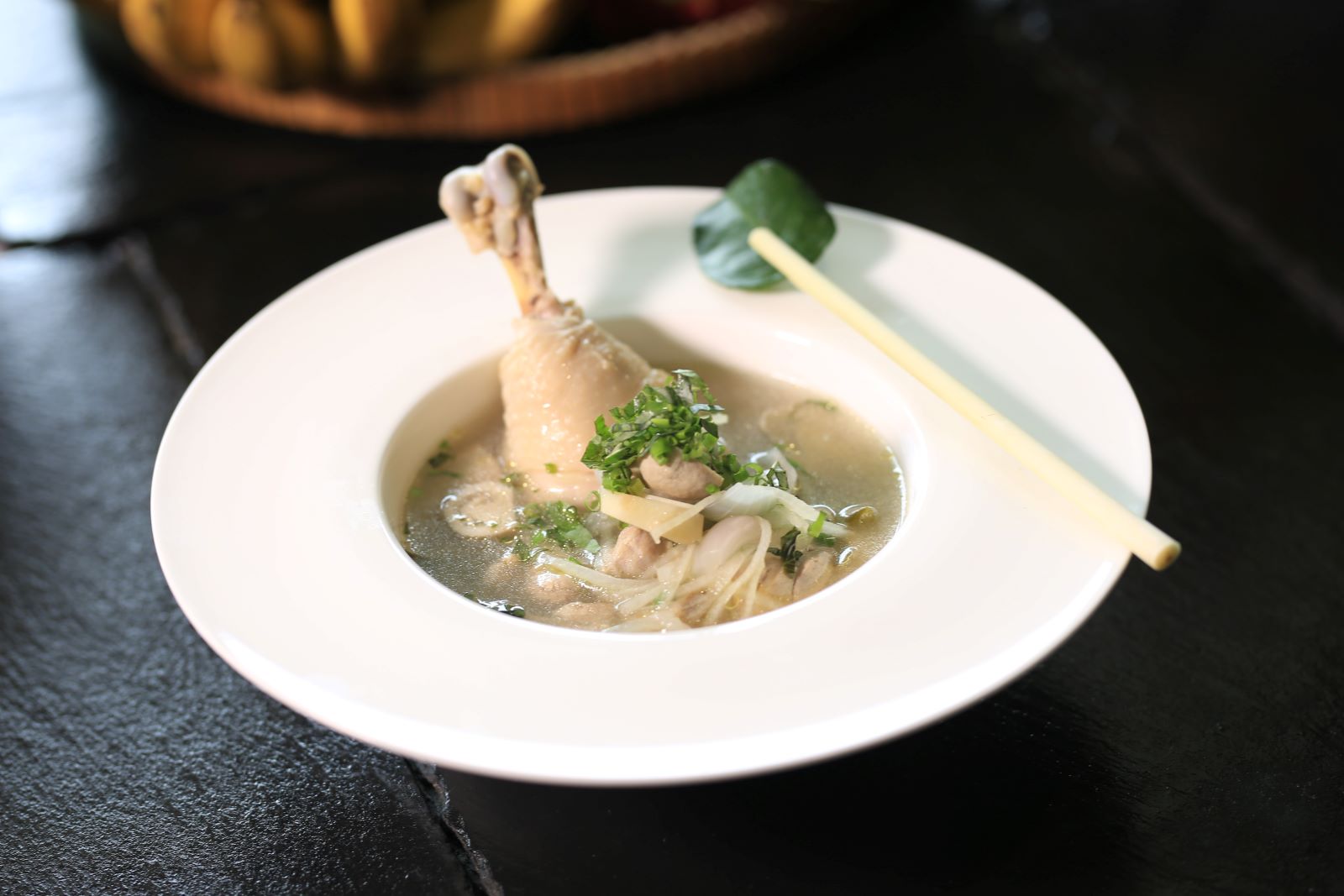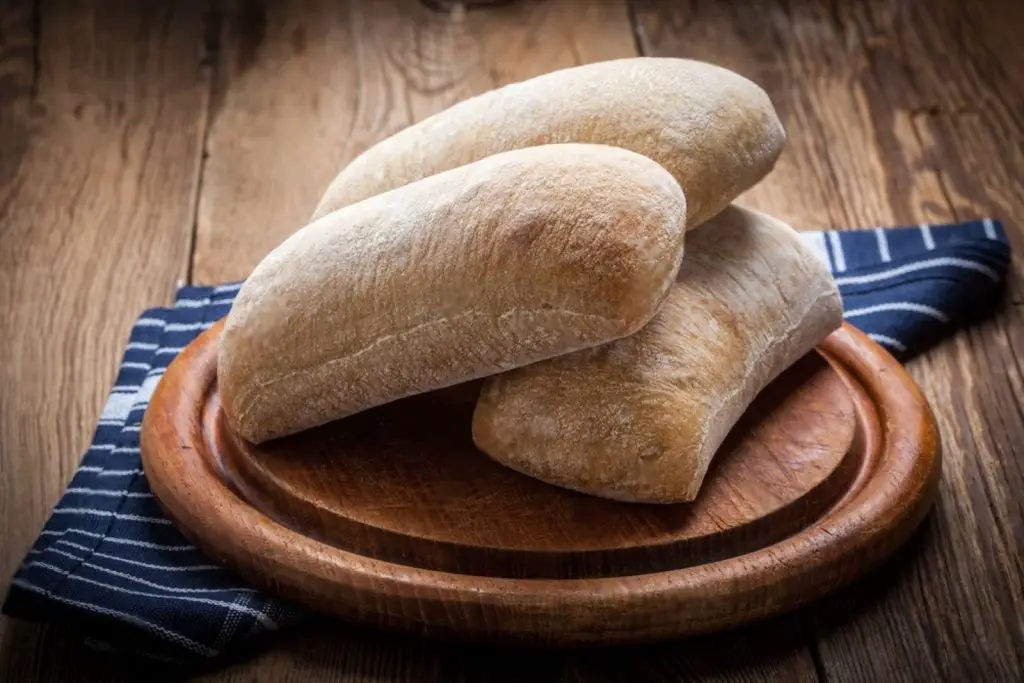
Chicken noodle soup is a comforting and classic dish enjoyed by many. It is a hearty soup consisting of tender chicken, flavorful broth, and noodles, often accompanied by vegetables and aromatic herbs. This soul-soothing soup is known for its comforting taste and nourishing qualities. Whether you make a large batch of chicken noodle soup or have leftovers, freezing can be a convenient option to preserve its deliciousness. Freezing chicken noodle soup allows you to store it for later, ensuring that you always have a comforting meal on hand. In the following section, we will explore how to properly freeze chicken noodle soup, ensuring its taste and quality remain intact.
Here are the simple steps to freeze chicken noodle soup:
Step 1: Allow the soup to cool down
Allowing the chicken noodle soup to cool down completely before freezing is essential for several reasons:
- Food safety: When hot food is placed directly in the freezer, it can raise the temperature of the freezer, potentially affecting the quality and safety of other foods stored there. Additionally, placing hot soup in the freezer can create an environment conducive to bacterial growth. By allowing the soup to cool down in the refrigerator first, you ensure that it reaches a safe temperature quickly, reducing the risk of bacterial contamination.
- Even cooling: Allowing the soup to cool gradually in the refrigerator helps ensure even cooling throughout the container. If you were to put hot soup directly into the freezer, the outer portion might freeze quickly, forming large ice crystals that can affect the texture and taste of the soup. By cooling it slowly in the refrigerator, the heat dissipates more evenly, resulting in a more uniform temperature throughout the soup.
- Ice crystal formation: When hot liquids freeze rapidly, ice crystals can form within the soup. These ice crystals can damage the texture of the ingredients, causing them to become mushy or lose their original consistency. By cooling the soup in the refrigerator first, you give it time for the temperature to decrease gradually, minimizing the formation of large ice crystals. This helps preserve the quality and integrity of the soup’s ingredients.
Step 2: Choose the right containers
Choosing the right containers for freezing chicken noodle soup is crucial to maintain its quality and prevent freezer burn. Here’s why freezer-safe, airtight containers or resealable freezer bags are recommended:
- Freezer-safe materials: Freezer-safe containers are specifically designed to withstand low temperatures without cracking or breaking. They are made of materials such as glass, hard plastic, or heavy-duty plastic, which can tolerate the extreme cold of the freezer without compromising the container’s integrity. Using containers that are not freezer-safe may result in breakage or leakage, leading to potential food spoilage and mess in the freezer.
- Airtight seals: Airtight containers or resealable freezer bags create a barrier that prevents air from entering the container and coming into contact with the soup. Exposure to air can lead to freezer burn, which is the dehydration and oxidation of food caused by moisture loss. Freezer burn can affect the taste, texture, and overall quality of the chicken noodle soup. By using containers with tight-fitting lids or freezer bags that can be sealed securely, you minimize the chances of freezer burn and help preserve the soup’s flavor and freshness.
- Clean and good condition: Ensuring that the containers or freezer bags are clean and in good condition is essential for food safety and quality. Dirty containers can introduce bacteria or contaminants into the soup, compromising its safety. Damaged containers may not provide adequate protection against freezer burn or may leak, leading to potential spoilage. Before using any containers, wash them thoroughly with hot, soapy water, rinse well, and make sure they are completely dry. Check for any cracks, chips, or other signs of damage that could affect their effectiveness.
By selecting freezer-safe, airtight containers or resealable freezer bags and ensuring they are clean and in good condition, you create a suitable environment for freezing the chicken noodle soup. This helps maintain its taste, texture, and overall quality during storage in the freezer.
Step 3: Portion the soup
Portioning the chicken noodle soup before freezing offers several benefits:
- Convenience: Freezing the soup into individual or desired portion sizes allows for convenient meal planning. You can easily thaw and reheat only the amount you need, whether it’s a single serving for a quick lunch or a larger portion for a family dinner. This eliminates the need to defrost and reheat the entire batch, saving time and effort.
- Reduced food waste: Portioning the soup helps minimize food waste. By freezing it in individual servings or smaller portions, you can thaw and consume only what you need, preventing any excess from going to waste. This is particularly useful if you have leftovers or if you’re freezing a large batch of soup that you intend to consume over multiple occasions.
- Preservation of quality: When you freeze the soup in smaller portions, each portion will freeze and thaw more quickly and evenly compared to freezing a large container. This results in better preservation of the soup’s flavor, texture, and overall quality. By minimizing the time it takes to thaw the soup, you reduce the risk of any potential degradation in taste or texture.
- Customizability: Portioning the soup allows you to customize each serving according to individual preferences. You can adjust the amount of noodles, vegetables, or chicken in each portion, ensuring that everyone gets their desired balance of ingredients when reheating the soup.
To portion the chicken noodle soup, you can use ladles, measuring cups, or freezer-safe containers that match your desired portion sizes. Make sure to leave some headspace in the containers to allow for expansion as the soup freezes. Label each portion with the date of freezing to keep track of its freshness.
Step 4: Package the soup
Packaging the chicken noodle soup properly before freezing is crucial for maintaining its quality and preventing freezer burn. Here’s why it’s important to leave headspace and seal the containers tightly:
- Expansion during freezing: Liquids, including the soup, expand as they freeze. If you fill the containers to their maximum capacity, the soup may overflow or cause the container to crack as it expands during freezing. Leaving some headspace, usually about 1 inch (2.5 cm), provides room for the soup to expand without causing any issues. This prevents container breakage and potential mess in the freezer.
- Air and moisture prevention: Exposure to air and moisture can lead to freezer burn, which can negatively impact the taste, texture, and overall quality of the soup. Freezer burn occurs when moisture evaporates from the surface of the soup and forms ice crystals, resulting in dry and discolored patches. By sealing the containers tightly or removing as much air as possible from resealable freezer bags, you create a barrier that prevents air and moisture from coming into contact with the soup, reducing the risk of freezer burn.
- Maintaining freshness and flavor: A tight seal helps preserve the freshness and flavor of the chicken noodle soup. It prevents the absorption of odors from other foods in the freezer, which could affect the taste of the soup. Additionally, a secure seal helps maintain the soup’s moisture content, preventing it from drying out or becoming overly watery during freezing.
To package the soup, carefully ladle or pour it into the selected containers, leaving the recommended headspace. For resealable freezer bags, squeeze out as much air as possible before sealing them securely. Make sure the lids are tightly closed for containers or the bags are sealed without any gaps. If using containers, you can also consider placing a layer of plastic wrap directly on the surface of the soup before sealing the lid to provide an extra barrier against air.
Step 5: Label and date the packages
Labeling and dating the packages of chicken noodle soup before freezing is essential for organization and ensuring food safety. Here’s why it’s important to label and date the packages:
- Easy identification: Properly labeling each container or freezer bag with the contents (chicken noodle soup) allows for easy identification in the freezer. When you have multiple items stored, clear labeling helps you quickly locate the soup without having to open or inspect each package. This saves time and avoids unnecessary thawing or reheating of other items.
- Storage time tracking: Adding the date of freezing to the label enables you to keep track of how long the chicken noodle soup has been stored in the freezer. It serves as a reminder of when the soup was prepared, allowing you to prioritize consumption based on freshness. By following recommended storage times for frozen soup, you can ensure that it remains safe to eat and maintains its quality. This information helps prevent consuming soup that may have been stored for too long.
- Food safety: Labeling the packages with the date of freezing also aids in food safety. It allows you to adhere to recommended storage guidelines and avoid the risk of consuming expired or potentially unsafe soup. With the date marked, you can easily determine if the soup has been stored for an appropriate duration or if it should be consumed soon.
To label the packages, you can use adhesive labels specifically designed for freezer use. Alternatively, you can write directly on the containers or freezer bags using a permanent marker. Ensure that the labels are legible and placed in a visible area, making it easy to read the contents and date.
Step 6: Freeze the soup
Freezing the packaged chicken noodle soup properly is crucial for maintaining its quality and maximizing freezer efficiency. Here’s why it’s important to place the packages in a flat and stable position with proper air circulation:
- Efficient freezing: Placing the soup packages in a flat and stable position helps ensure efficient and even freezing. This allows the cold air in the freezer to circulate the containers or bags, cooling them uniformly. It helps to freeze the soup quickly, preserving its flavor, texture, and nutritional value.
- Prevention of leaks: It’s important to arrange the containers or bags in a way that avoids potential leaks. Freezing the soup in a flat position helps prevent any liquid from spilling out or leaking from the containers or bags during the freezing process. This not only prevents a mess in the freezer but also ensures that the soup remains intact and properly sealed.
- Space for air circulation: Adequate air circulation is essential for maintaining optimal freezing conditions. When stacking containers, leaving some space between them allows air to flow freely around each package. This helps maintain a consistent freezing temperature and promotes efficient freezing. It also reduces the risk of freezer burn by preventing uneven cooling or condensation build-up.
To freeze the chicken noodle soup, place the packaged containers or bags in a flat and stable position on a freezer shelf or a flat surface in the freezer. Make sure they are arranged in a way that allows for proper air circulation and avoids any tilting or shifting. If you need to stack containers, leave some space between them to promote efficient freezing.
It’s also a good practice to avoid overcrowding the freezer during the freezing process. This ensures that there is enough room for proper air circulation and prevents any unnecessary pressure on the soup packages.
Other related questions
How do I properly thaw chicken noodle soup?
To properly thaw chicken noodle soup, there are a few recommended steps. Firstly, transfer the frozen soup from the freezer to the refrigerator. Allow it to thaw slowly in the refrigerator for several hours or overnight. Alternatively, you can thaw the soup by placing the sealed container in a bowl of cold water, ensuring it remains tightly sealed to prevent water absorption. Once thawed, reheat the soup on the stovetop or in the microwave until it reaches a safe and desired serving temperature. Stir the soup well before serving to distribute the flavors evenly.
How long can I freeze chicken noodle soup in the freezer?
Chicken noodle soup can be frozen for up to three months while still maintaining its flavor and quality. Properly stored in airtight containers or freezer-safe bags, the soup will remain safe to eat. However, it’s essential to label and date the packages to keep track of their storage duration. Freezing chicken noodle soup is a convenient way to have a comforting meal ready whenever you need it, but it’s best to consume it within the recommended timeframe for optimal taste and texture.
Can I refreeze chicken noodle soup that has been previously thawed?
It is generally not recommended to refreeze chicken noodle soup that has been previously thawed. When you thaw the soup, the ingredients go through temperature changes that can lead to bacterial growth and a potential loss of quality. Additionally, repeated thawing and refreezing can impact the texture and flavor of the soup. To minimize waste, it’s best to thaw and portion the soup in quantities that can be consumed in one sitting or find alternative ways to use the thawed soup within a safe time frame.
How do I know if my frozen chicken noodle soup has gone bad?
To determine if frozen chicken noodle soup has gone bad, there are a few signs to look out for. Firstly, check for any noticeable changes in color or texture. If the soup appears discolored, has an off smell, or shows signs of freezer burn such as ice crystals or dry patches, it may indicate deterioration. Additionally, if the soup has been stored for an extended period beyond the recommended freezing time, it is more likely to have degraded in quality. Trust your senses and if the soup looks or smells suspicious, it is best to discard it to avoid the risk of foodborne illness.
Can I use frozen chicken noodle soup with fresh ones?
Yes, you can use frozen chicken noodle soup alongside fresh ones, but there are a few considerations to keep in mind. When combining frozen and fresh soup, it’s best to thaw the frozen portion separately before adding it to the fresh soup. Thawing the frozen soup ensures it can be fully incorporated into the mixture without altering the cooking time or temperature. Additionally, be mindful of the overall soup consistency and adjust seasoning if needed, as the frozen portion may release additional moisture during reheating. Mixing fresh and frozen chicken noodle soup allows for convenient meal preparation and helps minimize food waste.
Can you freeze chicken noodle soup in a Mason jar?
While it is possible to freeze chicken noodle soup in a Mason jar, it is not recommended. Glass jars can break or crack when the soup expands as it freezes. This could cause injury or create a mess in your freezer. It’s best to use freezer-safe containers made of plastic or other materials designed for freezing. If you must use a glass jar, be sure to leave enough room at the top for the soup to expand and avoid overfilling the jar.
Can you freeze chicken noodle soup with cream or milk?
While it’s possible to freeze chicken noodle soup with cream or milk, it’s not recommended because these dairy products can separate and become grainy or clumpy after freezing and reheating. If you want to freeze soup with dairy, it’s best to omit the dairy before freezing and add it in after thawing and reheating. Alternatively, you can use non-dairy milk alternatives like coconut milk or cashew cream that freeze and reheat well.
Is it safe to freeze chicken noodle soup with pasta?
Yes, it is safe to freeze chicken noodle soup with pasta. However, pasta can become mushy or overcooked when it’s frozen and thawed, so it’s best to slightly undercook the pasta before adding it to the soup. This way, it will be perfectly cooked when you reheat the soup. Once the soup is cooled to room temperature, transfer it to airtight containers or freezer bags and store it in the freezer for up to 3 months. When you’re ready to eat the soup, thaw it in the refrigerator overnight or use the defrost setting on your microwave. Reheat the soup on the stovetop or in the microwave until it’s hot and bubbly.
Can you freeze chicken noodle soup with vegetables?
Yes, you can freeze chicken noodle soup with vegetables. However, some vegetables like lettuce, cucumbers, and tomatoes do not freeze well and can become mushy after thawing. If you’re adding vegetables to your chicken noodle soup, it’s best to use heartier vegetables like carrots, celery, and onions that can withstand freezing and thawing. To prevent overcooking, blanch vegetables before adding them to the soup. Once the soup is cooled to room temperature, transfer it to airtight containers or freezer bags and store it in the freezer for up to 3 months.
Should you season chicken noodle soup before freezing it?
It’s best not to season chicken noodle soup before freezing it because the flavors can intensify during freezing and reheating, leading to an overly seasoned or salty soup. Instead, freeze the soup without seasoning, then add salt, pepper, and other seasonings to taste when you reheat it. This allows you to adjust the seasoning to your liking and ensures that the soup is flavorful without being overly salty or spicy.
Can you freeze chicken noodle soup in a glass container?
Yes, you can freeze chicken noodle soup in a glass container, but it’s important to use a container that is specifically designed for freezing. Ordinary glass containers may crack or shatter when exposed to extreme temperatures. Be sure to leave some space at the top of the container to allow for expansion during freezing. It’s also important to let the soup cool to room temperature before placing it in the freezer to prevent the glass from breaking due to sudden temperature changes.








